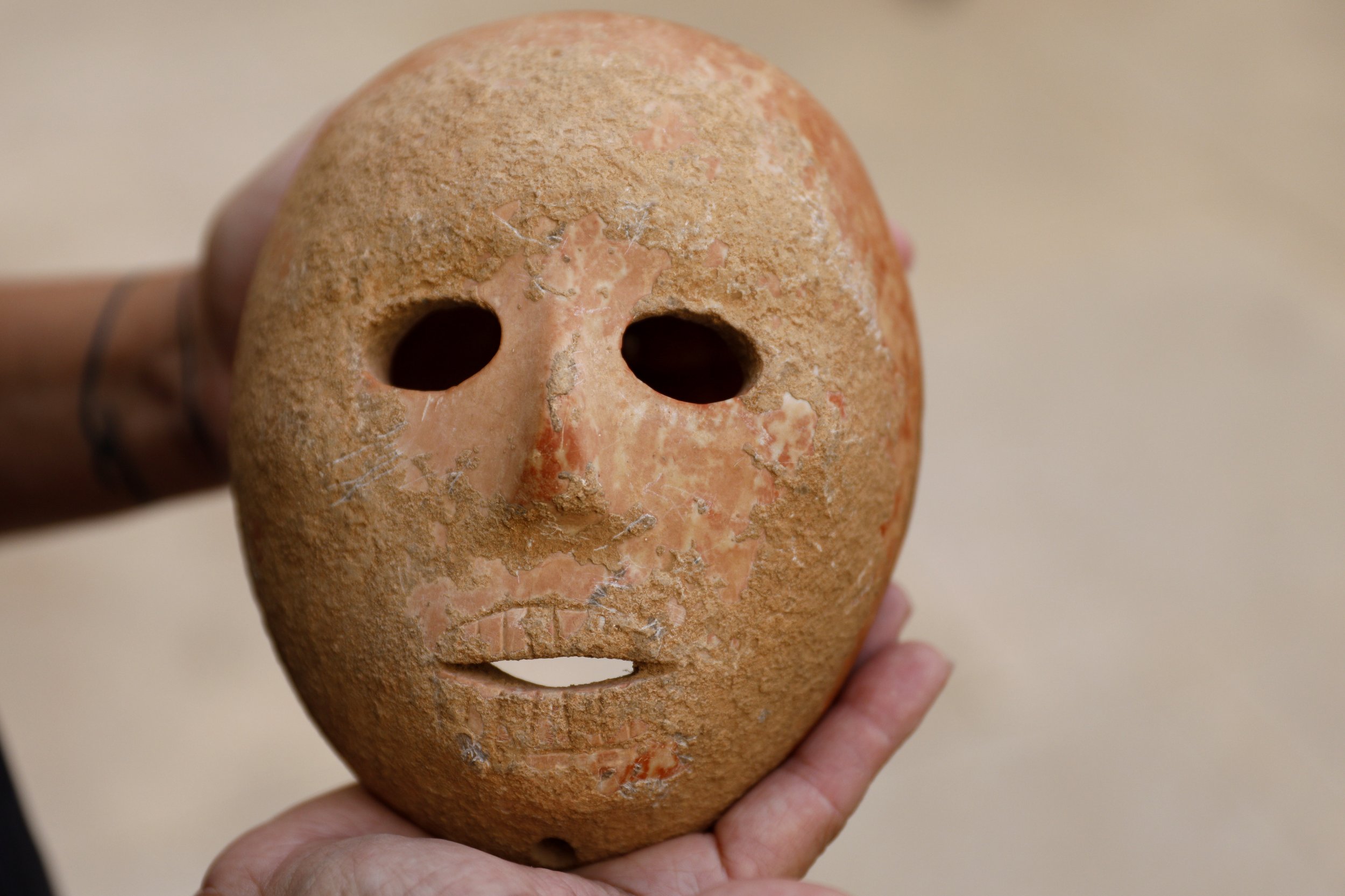
Israeli archaeologists discovered a rare 9,000-year-old stone mask they said was linked to the very beginnings of agricultural society.
The rare artifact—which bears a slight resemblance to a hockey mask—is made from pink and yellow sandstone, according to Agence France-Presse. It was discovered this year by a man walking through a field near the Israeli settlement of Pnei Hever in the occupied West Bank.
"The mask is very naturalistic in the way it was made," Ronit Lupu, an archaeologist with the Israeli Antiquities Authority, said. "You can see the cheekbones, you can see a perfect nose."
Lupu noted that 14 other neolithic masks that resembled the latest find had been uncovered in the past. But these artifacts were rare and were in the hands of private collectors, meaning researchers were prevented from learning more about them.
"The last one that we know was found 35 years ago," Lupu said. "It's an amazing find, archaeologically speaking."
According to archaeologists, the mask dates back to a key period in human history—the agricultural revolution, when humans were transitioning from hunting and gathering to domesticating plants and animals.
This "was accompanied by a change in social structure and a sharp increase in ritual-religious activities," Lupu said. For example, masks may have played an important role in the worship of ancestors.
"Stone masks, such as the one from Pnei Hever, are similar in size to the human face, which is why scholars tend to connect them with such worship."
The archaeologists said that it could be one of the oldest surviving ritual masks in the world, however, there was not enough evidence available to identify what function the artifact served. It could also have been used as a death mask, for example, or displayed in another way, such as being hung up—as the holes drilled into its side would suggest.
The West Bank is landlocked Palestinian territory that has been under Israeli occupation since the 1967 Six-Day War. Disputes over artifacts uncovered there were a common feature of the long-running conflict.
Several representations of human faces have been found across the Levant, however, most of them tend to be relatively abstract, with experts divided over whether they could be definitively described as masks, Haaretz reported. As such, the recent finding and the 14 similar masks were considered the earliest definitive manifestations of this phenomenon.
Uncommon Knowledge
Newsweek is committed to challenging conventional wisdom and finding connections in the search for common ground.
Newsweek is committed to challenging conventional wisdom and finding connections in the search for common ground.
About the writer
Aristos is a Newsweek science reporter with the London, U.K., bureau. He reports on science and health topics, including; animal, ... Read more
To read how Newsweek uses AI as a newsroom tool, Click here.








